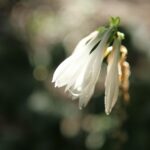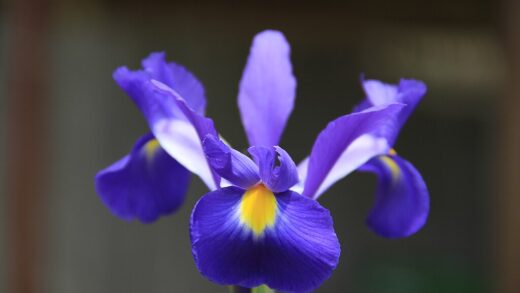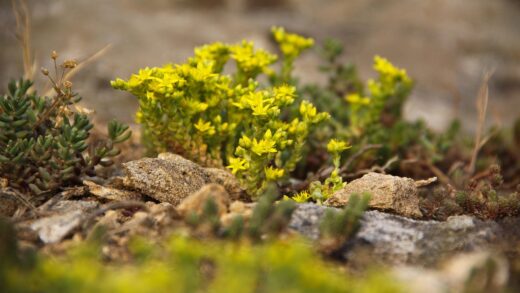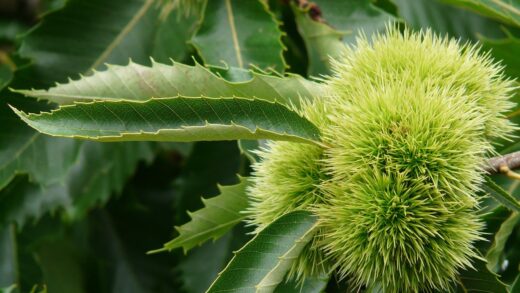Successfully wintering orpine is a testament to the plant’s inherent hardiness and its well-evolved survival strategies. This resilient perennial is adapted to withstand cold temperatures and challenging winter conditions, making it a reliable fixture in gardens across a wide range of climates. The key to ensuring its survival and vigorous return in the spring lies not in excessive protection, but in providing the right foundational conditions long before the first frost arrives. Proper siting and a hands-off approach during its dormant period are far more critical than any elaborate winterizing procedures.
The plant’s preparation for winter is a natural process that begins in the autumn as temperatures drop and daylight hours shorten. It withdraws energy from its leaves and stems, storing it in its thick, fleshy roots and the dormant buds at the crown of the plant. This stored energy is the fuel for its emergence in the spring. The above-ground foliage will yellow and die back, but the plant itself remains very much alive beneath the soil surface, awaiting the return of warmer weather.
One of the most appealing aspects of orpine in the winter landscape is the structural interest provided by its dried stems and seed heads. These sturdy stalks, topped with their flattened flower heads, can catch the snow and frost beautifully, adding texture and form to the otherwise dormant garden. They also serve a valuable ecological function, providing a source of seeds for birds like finches and juncos throughout the cold months. For these reasons, many gardeners choose to leave the plant standing through the winter.
The primary threat to orpine during the winter is not the cold itself, but rather the combination of cold and excessive moisture. The dormant crown is highly susceptible to rot if it sits in cold, waterlogged soil for an extended period. This underscores the paramount importance of ensuring the plant is in a location with excellent drainage. A well-drained site prevents water from pooling around the crown, allowing the plant to remain relatively dry and safe from the decay that can occur in soggy winter conditions.
Preparing for dormancy
The preparation of orpine for its winter dormancy is a process that largely takes care of itself, requiring minimal intervention from the gardener. As autumn progresses, the plant will naturally begin to senesce. The leaves will lose their vibrant color, turning yellow or brown, and the stems will begin to dry out. This is a normal and essential part of its lifecycle, as the plant reallocates resources from the top growth down into the root system for storage over the winter.
More articles on this topic
It is important to resist the urge to cut the plant back prematurely in the autumn. As long as the stems and leaves have some color, they are still photosynthesizing and sending energy down to the roots. Cutting them back too early can deprive the plant of vital energy reserves it needs to survive the winter and produce a robust flush of growth in the spring. It is best to wait until the foliage has completely died back and turned brown, or even to leave the cleanup until late winter or early spring.
Watering should be significantly reduced and then stopped entirely as the plant enters dormancy. Supplemental irrigation in the autumn is usually unnecessary and can be harmful. The goal is for the plant to enter the winter in soil that is on the dry side. Excess moisture around the crown during the cold months is the leading cause of winter loss due to rot, so ensuring the soil is not saturated is a critical preparatory step.
Another aspect of preparation involves ensuring the area around the plant is clean. Removing fallen leaves and other debris from the crown of the plant can be beneficial. This cleanup improves air circulation and reduces the likelihood of creating a damp, protected environment where pests like slugs might overwinter or where fungal diseases could gain a foothold. A clean crown area ensures that the plant enters its dormant period in a healthy state.
The role of snow cover
Snow cover plays a significant and beneficial role in the winter survival of perennial plants like orpine. A consistent blanket of snow acts as a natural insulator, protecting the dormant crown of the plant from the harshest winter conditions. It shields the plant from extreme temperature fluctuations, preventing the repeated freezing and thawing of the soil that can damage roots and heave plants out of the ground. It also offers protection from the desiccating effects of cold, dry winter winds.
More articles on this topic
In climates where reliable snow cover is the norm, orpine typically overwinters with exceptional success, even when temperatures drop well below freezing. The layer of snow maintains a more stable, albeit cold, temperature at the soil level, protecting the dormant buds from deep freezes. For gardeners in these regions, little to no additional winter protection is necessary, provided the plant is in well-draining soil. The snow provides all the insulation the plant requires.
Conversely, in regions with cold winters but inconsistent or non-existent snow cover, the plant is more exposed. The bare ground is subject to deeper frost penetration and the damaging effects of freeze-thaw cycles. The crown is also vulnerable to drying out from persistent winter winds. While orpine is very hardy, these conditions can be more stressful for the plant. Even in these situations, however, the plant’s innate toughness often sees it through without issue.
If you are in a cold climate with little snow cover and are concerned about a particularly harsh winter, you can provide a light layer of mulch after the ground has frozen. A few inches of chopped leaves or pine boughs can help to insulate the soil and moderate its temperature, mimicking the protective effect of snow. It is crucial to wait until the ground is frozen before applying the mulch, as applying it too early can trap moisture and warmth, potentially leading to rot or encouraging rodents to nest.
To cut back or not to cut back
One of the most common questions gardeners have regarding the winter care of orpine is whether to cut the stems back in the autumn or leave them standing until spring. There are valid arguments for both approaches, and the decision often comes down to a combination of aesthetic preference, garden maintenance style, and ecological considerations. There is no single “correct” answer, as the plant’s health is not significantly impacted by the timing of this task.
Leaving the stems and seed heads standing through the winter offers considerable ornamental value. The strong, upright stalks and broad, flat seed heads provide architectural structure and interest to the garden landscape at a time when it can be quite bare. They look particularly stunning when dusted with frost or a light layer of snow. This visual appeal is a primary reason many gardeners choose to delay the cleanup until spring.
Beyond aesthetics, there is a significant ecological benefit to leaving the plant intact. The seed heads provide a valuable food source for small seed-eating birds, such as goldfinches and sparrows, helping to support local wildlife through the lean winter months. The standing stems can also help to trap insulating snow around the crown of the plant, offering a degree of natural protection. This approach aligns with a more naturalistic and wildlife-friendly style of gardening.
The main argument for cutting the plant back in the autumn is garden tidiness. Some gardeners prefer a clean and uncluttered look for their winter beds. An autumn cleanup means there is one less task to do during the busy spring season. If you choose to cut the plant back, wait until a hard frost has completely killed the top growth. Use clean pruners to cut the stems down to a height of about two inches from the ground, leaving a small stub to mark the plant’s location.
Winter care for container-grown orpine
Wintering orpine that is grown in containers requires a bit more attention than for plants in the ground. The soil in a pot is exposed to cold air from all sides, not just the top surface, meaning the root ball can freeze much more quickly and deeply than the ground soil. While orpine is very cold-hardy, the roots are generally less hardy than the crown, and having the entire root system freeze solid in a container can be fatal, even for a tough plant.
The best strategy for overwintering containerized orpine in cold climates (approximately USDA Zone 6 and colder) is to provide some form of protection. One simple method is to move the pot to a more sheltered location, such as against the wall of the house or under the eaves of a roof. This will protect it from harsh winter winds and the most extreme temperature fluctuations. Grouping several pots together can also help to create a microclimate and provide mutual insulation.
For even greater protection, the container can be moved into an unheated but protected space, such as a garage, shed, or cold frame. The goal is not to keep the plant warm, but simply to keep the roots from freezing solid. The plant needs to remain cold enough to stay dormant, so a heated room is not suitable. The soil in the pot should be kept on the very dry side throughout the winter, receiving just enough moisture to prevent the roots from completely desiccating—perhaps a very small amount of water once a month.
Another method is to sink the entire pot into an empty garden bed and cover it with a layer of mulch. This uses the insulating properties of the surrounding soil to protect the roots, just as if the plant were in the ground. Regardless of the method chosen, the key is to prevent the roots from freezing solid while ensuring the soil remains well-drained and not waterlogged. With these precautions, container-grown orpine can successfully overwinter and return for another season of beauty.


















